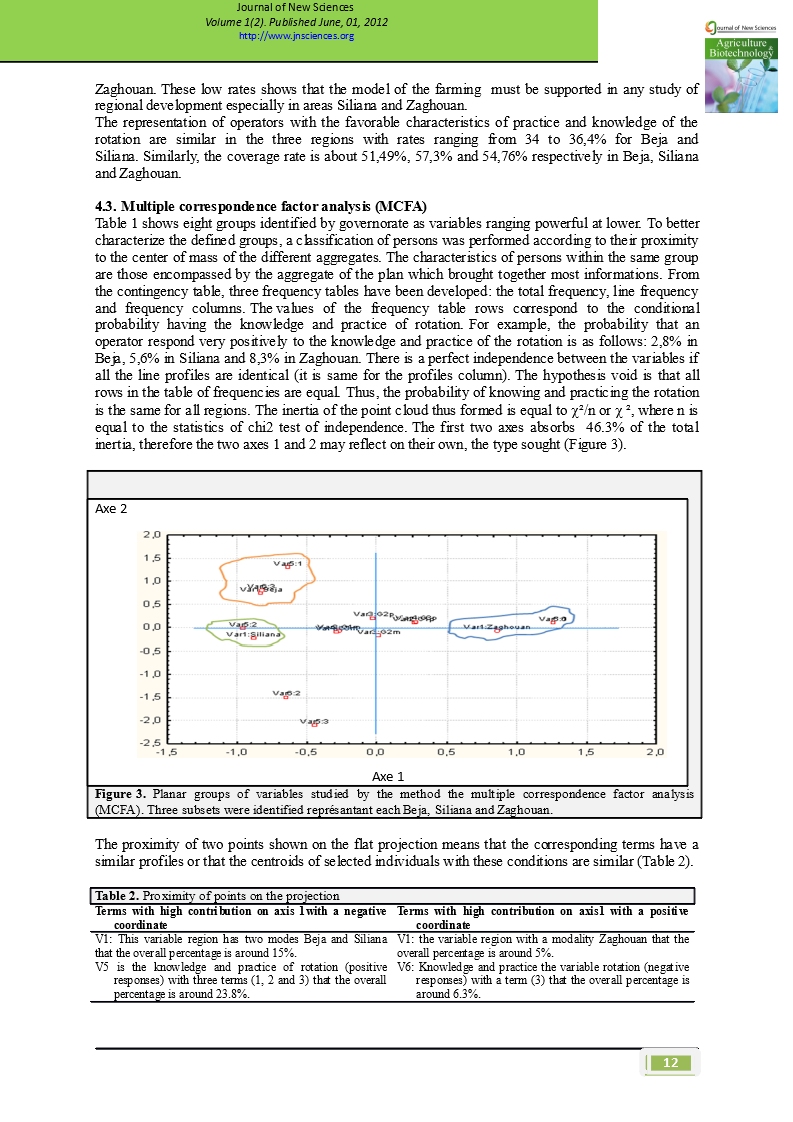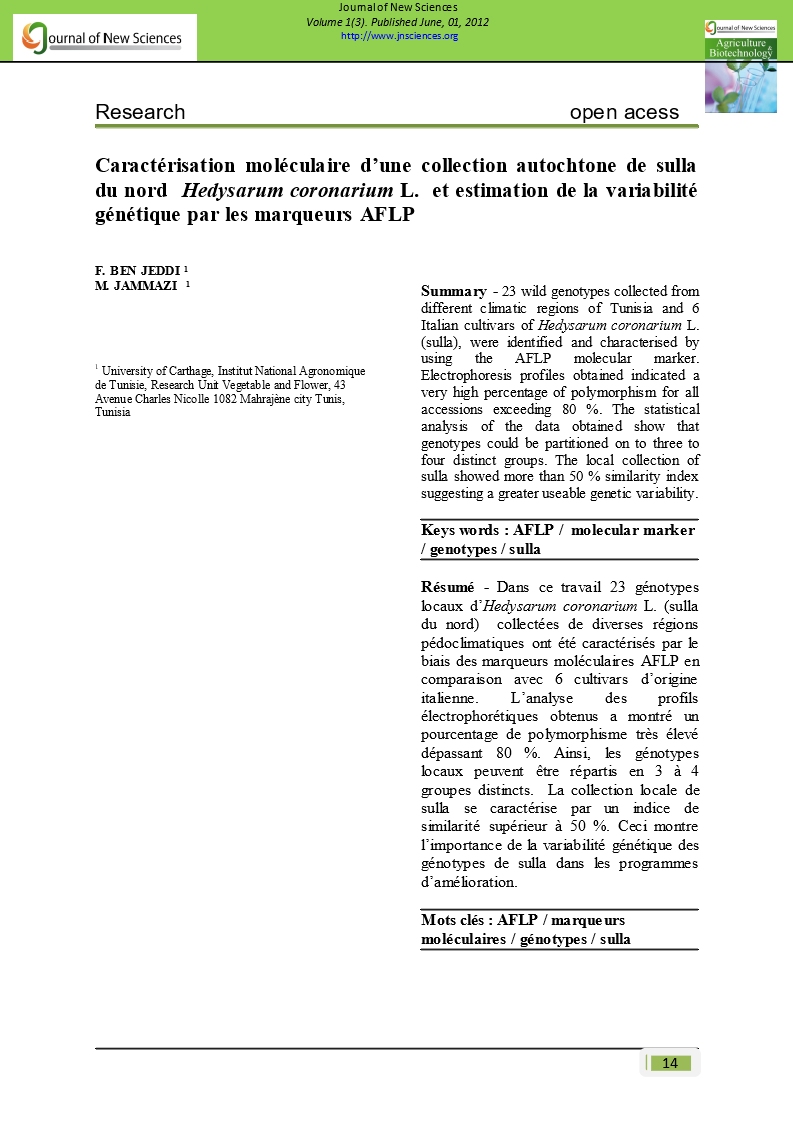- Category: Volume 1
- Hits: 7396
Typology of farmers in mountainous areas of northern Tunisia

S. SLIM 1
F. BEN JEDDI 1
S. REZGUI 1
L. MALLAT 2
1 University of Carthage, Institut National Agronomique de Tunisie, Research Unit Vegetable and Flower, 43 Avenue Charles Nicolle 1082 Mahrajène city Tunis, Tunisia
2 MCM Training Center, 03 Industrial Park Street, Sidi Rzig, Tunisia
Summary - The Pastoral systems in the mountainous regions of northern Tunisia are undergoing profound transformations related to the changes that are both on the social organization, economy and cultural practices. As part of study areas Zaghouan, Siliana and Beja, we review cropping systems in mountain areas and especially among small farmers. The field survey about the practice of crop rotation in the mountainous areas of Tunisia and the types of operators, showed that the profiles supported the practice of rotation among farmers are practicing this profession for a decade, married, over 40 years and having level of primary education or more. The environment for the rotation is represented by a farmer residing on the premises owner of its operations and whose main activity is agriculture, located within 10km of a weekly market, and browsing a paved road or semi paved. The model mixed farming to livestock (cattle, sheep or both), with topography sloping plain or with soil type clay or sandy, a surface area of over 10ha profile is favorable to the practice of rotation. This occurs in 25,7 - 16,4 and 15,4% respectively in Beja, Siliana and Zaghouan. The multivariate analysis provided a better understanding of the nature of links between the different production parameters in a given region, showing that the farmers from the regions mentioned above, are characterized by a knowledge of the rotation type growing up respectively from absent, low to medium.
Keys words : cropping systems / small farmers / mountainous regions / practice of crop rotation / typology of operators / multidimensional analysis


